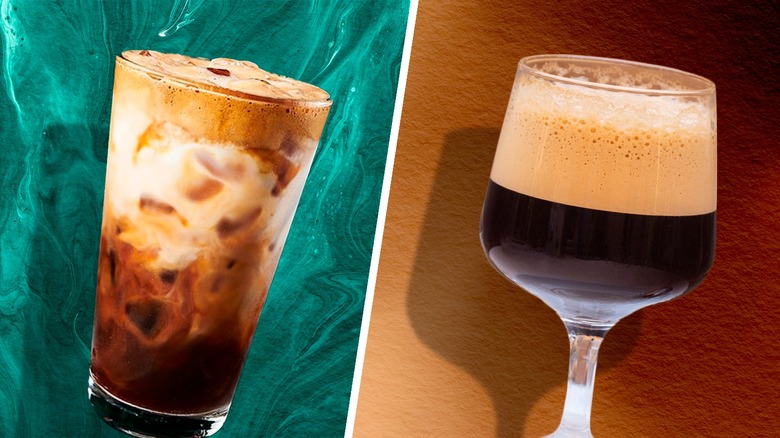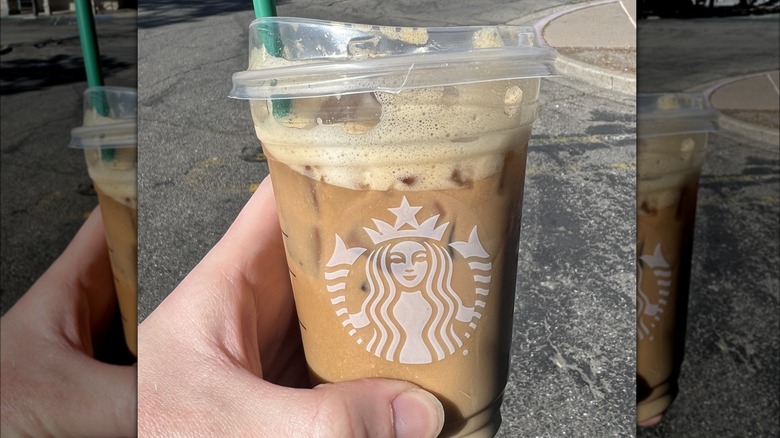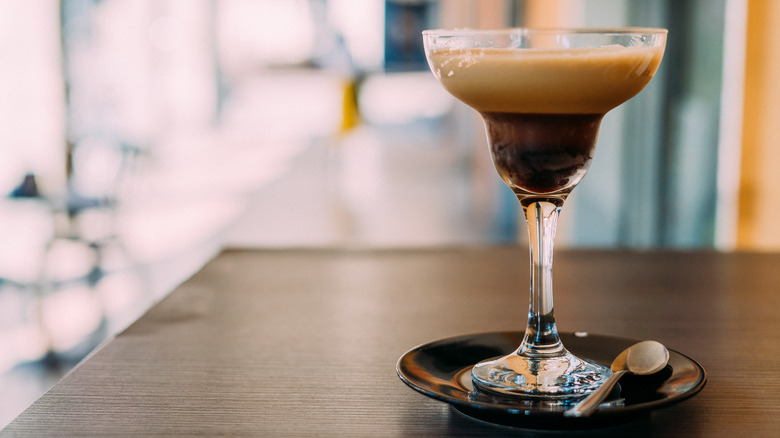Starbucks' Shaken Espresso Vs Italy's Shakerato: What's The Difference?
When it's hot out (or even when it's not), an iced coffee can kick-start your day. There are so many varieties of this chilled beverage that it's easy to conflate them sometimes, as with Starbucks' shaken espresso and the shakerato. Both drinks are shaken with ice, and both incorporate a mix of cold espresso and a sweetener. There are, however, two key aspects that set them apart — the inclusion of milk and where the ice ends up after shaking.
While a Starbucks shaken espresso is pretty easy to come by since it's, well... served at Starbucks, you may have to head to an Italian restaurant to pick up a shakerato. Alternatively, you could use this as an excuse to hop on a plane to Italy. One thing the drinks have in common is that they can be made at home, requiring few ingredients and minimal equipment, so you'll be able to sample them both and pick your favorite.
The shaken espresso isn't for everyone
If you order a tall shaken espresso at Starbucks, you will receive a concoction of milk, three pumps of classic syrup, and two shots of espresso. As is usually the case with Starbucks orders, you can customize the kind of milk, sweetener, and coffee used in your drink. You can also increase or decrease the number of shots and syrup pumps. The ingredients are shaken together and served in a tall glass, with the ice remaining to keep the drink cool.
The Starbucks shaken espresso isn't exactly a universally acclaimed drink, with Redditors taking issue with the consistency (or lack thereof) of how it's made. To improve this, commenters suggested replacing the milk with half-and-half for a thicker end product. One barista bravely posted their variation, which uses brown sugar, to the Starbucks subreddit to get users' opinions on its increased foaminess. The community was divided, with some referring to the texture as their "dream," while others insisted it was "too foamy!"
Shakeratos ditch the ice and milk
The most noticeable difference between the two drinks is in their respective appearances. The ice functions as a foaming agent only in a shakerato, creating little bubbles that aerate the liquid before being discarded. This results in a smoother, more elegant look, particularly as it's usually served in a coupe glass. The other difference is potentially rooted in Italian cultural norms. The shakerato does not contain milk, which could be attributed to the fact that Italians tend not to order milky coffee, such as a cappuccino, after breakfast.
While their breakfasts are traditionally small and can handle the extra dairy, consider typically Italian lunch and dinner staples for a moment. Pasta, cheese, bread, meat, and fish feature prominently, which is pretty heavy fare. Dinner is typically made up of four courses, and an Italian lunch may have two courses as well. It's fair to say that Italians take great enjoyment in their dining experiences and value variety as well as the sheer amount of food served.
Would you want to add milk to that equation as well? Italians certainly don't, as maintaining a perfect balance in their daily intake is an integral part of their lifestyle. With these cultural traditions in mind, it's not surprising that the shakerato, a drink best suited to combat the heat of the afternoon sun, would not contain milk.


